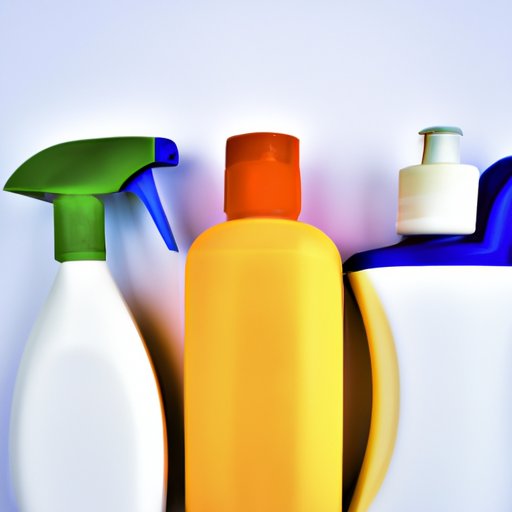Introduction
Have you ever wondered how your cleaning and personal care products are able to remove dirt and grime, or why your favorite foods have such a smooth texture? The answer lies in surfactants, an essential component in many everyday products. Surfactants are chemical compounds that help to reduce the surface tension of liquids and are widely used in various industries. In this article, we’ll be exploring what surfactants are, their different types and uses, and their impact on the environment.
Everything You Need to Know About Surfactants: A Comprehensive Guide
Surfactants are compounds that have both hydrophilic (water-loving) and hydrophobic (water-hating) properties. This unique characteristic allows them to interact with both water and oil-based substances, making them an essential component in many cleaning, personal care, and food products. Surfactants work by breaking down the surface tension of water, allowing it to wet surfaces more easily and lift dirt and oil away from surfaces.
There are several types of surfactants, including anionic, cationic, nonionic, and amphoteric. Each type has unique properties that make them suitable for different applications. For example, anionic surfactants, such as sodium lauryl sulfate, are commonly found in detergents and shampoos because they are excellent emulsifiers. Cationic surfactants, on the other hand, are often used in fabric softeners due to their ability to give fabrics a softer texture.
Surfactants are present in a wide range of household products, including dish soap, laundry detergent, shampoo, and body wash. They are essential components of these products because they help to reduce the surface tension of water and allow the cleaning agents to penetrate and lift dirt and grime away from surfaces.
The Science Behind Surfactants: How They Work in Cleaning Products
Surfactants are essential components in many cleaning products because of their ability to reduce surface tension. When a surfactant is added to water, it reduces the surface tension of the water molecules, allowing it to wet surfaces more readily. This helps cleaning agents to penetrate and remove dirt and grime from surfaces.
Additionally, surfactants can help to emulsify oils and fats, allowing them to be dissolved in water and removed from surfaces. This is particularly useful when cleaning greasy or oily surfaces, such as kitchen counters or stovetops.
Examples of cleaning products that rely on surfactants include dishwashing liquid, laundry detergent, and all-purpose cleaners. Without surfactants, these products would be less effective at removing dirt and grime, and would struggle to penetrate greasy or oily surfaces.
Why Surfactants are Essential in Personal Care Products
Surfactants also play an essential role in personal care products, such as shampoo, body wash, and toothpaste. They are responsible for providing the foaming action that makes these products effective at cleaning various body parts. Surfactants help to create a lather that traps dirt and oils, allowing them to be easily washed away.
Surfactants are also responsible for the texture and feel of many personal care products. For example, the creamy texture of body washes and shampoos is achieved by using surfactants that provide a smooth texture.
Examples of personal care products that use surfactants include toothpaste, shampoo, body wash, and hand soap. Without surfactants, these products would be less effective at cleaning and have a less pleasant texture and feel.
The Environmental Impact of Surfactants: What You Need to Know
While surfactants play an important role in various industries, they can also have an adverse impact on the environment. Many surfactants are non-biodegradable and can persist in the environment for long periods of time. Some surfactants can also be toxic to aquatic life, causing harm to ecosystems when not disposed of properly.
Despite these environmental concerns, the industry is working to minimize the impact of surfactants. Many companies are investing in research to develop biodegradable surfactants that can break down more readily in the environment. Additionally, many manufacturers are developing processes that allow them to safely dispose of surfactants, minimizing their impact on the environment.
Surfactants in the Food Industry: How They Improve Flavor and Texture
Surfactants are also widely used in the food industry, where they are used to improve flavor and texture. Surfactants can help to emulsify fats, allowing them to be suspended in water-based components and creating a smooth texture.
Additionally, surfactants can help to create more stable foams, such as in whipped cream and meringue. Surfactants can also help to create gels and thickeners, allowing food manufacturers to produce products with a smooth, uniform texture.
Examples of common foods that contain surfactants include ice cream, whipped cream, processed cheese, and bread. Surfactants are essential components in these products, contributing to their texture, flavor, and overall quality.
Conclusion
Surfactants are essential components in many everyday products, from cleaning products to personal care items and even food. Understanding the function and impact of surfactants is important in ensuring that we use these products safely and responsibly. As the industry continues to develop and improve surfactants, we can look forward to products that are both effective and eco-friendly.
